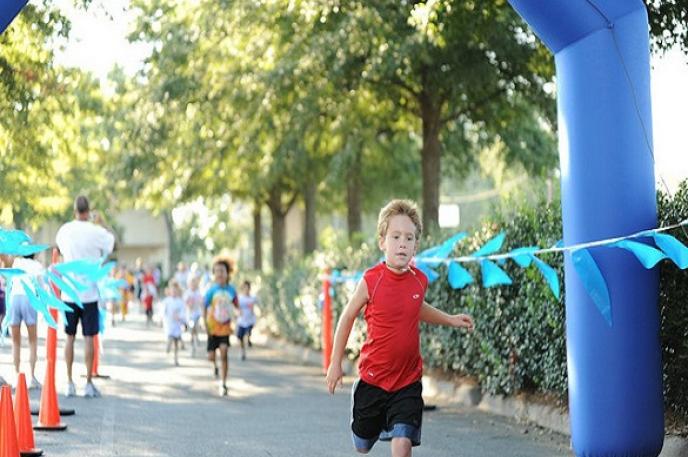
Run, walk or bike to Charlotte Mecklenburg Library with your 2019 healthy living goals
January 2, 2019
Want to read more in 2019? Charlotte Mecklenburg Library can help with that. Want to get or stay fit in 2019? The Library can help with that too!
Get moving
Put that new (or old!) fitness tracker to the test with one of our hundreds of workout DVDs and streaming videos. Here’s just a sampling of how to get your heart rate up!
- Knock out your stress with kickboxing master Billy Blanks DVDs.
- Substitute My Yoga: Who Needs Coffee? on Hoopla if you’re cutting back your caffeine intake.
- Watch Arnold Schwarzenegger's classic Pumping Iron to get motivated with your strength training regimen.
- Don’t attempt a marathon in a month! Start out ‘nice and easy’ with our low-impact video collection.
- Save money on gym fees by streaming a cardio dance workout from your living room.
Snack smarter
Put down the junk food and pick up one of these healthier snacking cookbooks. However, we like to live by the “everything in moderation” rule and included something sweet!
- Stephanie Tourles’ Raw Energy is full of simple recipes made with easy-to-find ingredients.
- Try a healthier chocolate chip cookie dough recipe or oatmeal cookie energy bites from Laura Chalela Hoover’s Mom's Sugar Solution cookbook.
- Kids of all ages will enjoy Laura Fuentes’ The Best Homemade Kids' Snacks on the Planet.
- Treat yourself with a recipe from the Jeni’s Splendid Ice Cream cookbook if you can’t make it to the South End shop.
Sleep more
While we can’t add another hour or two to your day, we can recommend some resources to help you rest.
- Take a Relaxation 101 class offered through our Universal Class resource.
- Limit your screen time at bedtime and read a short story by Alice Munro or Curtis Sittenfeld, or try a graphic novel adaptation of a classic literary work.
- Listen to rhythmic and soothing audiobooks narrated by Jim Dale or Maya Angelou. (If you’ve never heard of Jim Dale, he’s narrated everything from Harry Potter to A Christmas Carol!)
- Take advantage of our streaming music services, Hoopla and Freegal, to download white noise or relaxing albums.
Practice mindfulness
Mindfulness and meditation practices continue to trend in 2019. Join one of these free gentle January health programs at a library location near you!
- Manage stress with Mindfulness and Meditation at Matthews Library on Jan. 15, 2019 at 6 p.m.
- Pop in to Main Library during lunchtime for Making a Fresh Start with Heartfulness at 11 a.m. on Jan. 18, 2019.
- Head to Davidson Library for Introduction to Healing Touch on Jan. 16, 2019 and Yoga for Stress Relief on Jan.23, 2019, both at 6 p.m.
Let the Library help you take your first steps, no matter how small, in your journey to a healthier you in 2019!
Inside look: Morrison Regional Library’s (very cool) book conveyor belt
January 4, 2019
Drop your book or materials inside the return slot at Morrison Regional Library and listen.
You’ll hear the chugging whir of the conveyor belt that, behind the materials drop, propels the item up a steep ascent like a roller coaster on its way back to a sorting bin where the circulation team will then either put the book, DVD or other item back onto the shelves or reroute to another Library location in the system.
The whirring comes from the Automated Material Handling (AMH) system, a state-of-the-art conveyor belt and sorting system, just like the ones you may see at Amazon distribution centers.
“Kids like to put their books in the slot, and then they can hear the conveyor belt start,” said Tara Flanagan, circulation manager at the Morrison Regional Library location. “It’s fascinating for them, especially if they see their own book coming back and being sorted.”
The AMH system was up and running at the Morrison location in April 2018, a few months after the renovated Library re-opened to the public. The glances through the book drop and ears pressed against the wall to listen combined with the AMH created a better and more interesting Library for both customers and staff.
“It lets staff be on the floor with the public more since we don’t have to be at the desk scanning every single book and then sorting it ourselves,” Flanagan said.
As of December 2018, the machine has moved and sorted more than 270,000 books.
Here’s how the machine works:
After a customer drops a book or item in the slot at Morrison Regional Library, the item travels up the machine, sandwiched between two moving, interlocking moving belts. 
Once it reaches the top, the item travels through a small hole in the wall and moves across the top of the Library’s circulation room before it travels back down on the conveyor belt for sorting.
This, Flanagan said, is where the technology really kicks in.
Once materials reach the sorter, the machine moves each item, one-by-one, up one more, short, conveyor belt, the machine clicking all the way as it moves the materials. The item then runs under a scanner that immediately ‘reads’ a special tag inside the item. The material then gets passed on over several rolling assembly line surfaces and sorted into genre-specific bins or Library locations if it’s going out into the system-wide circulation.
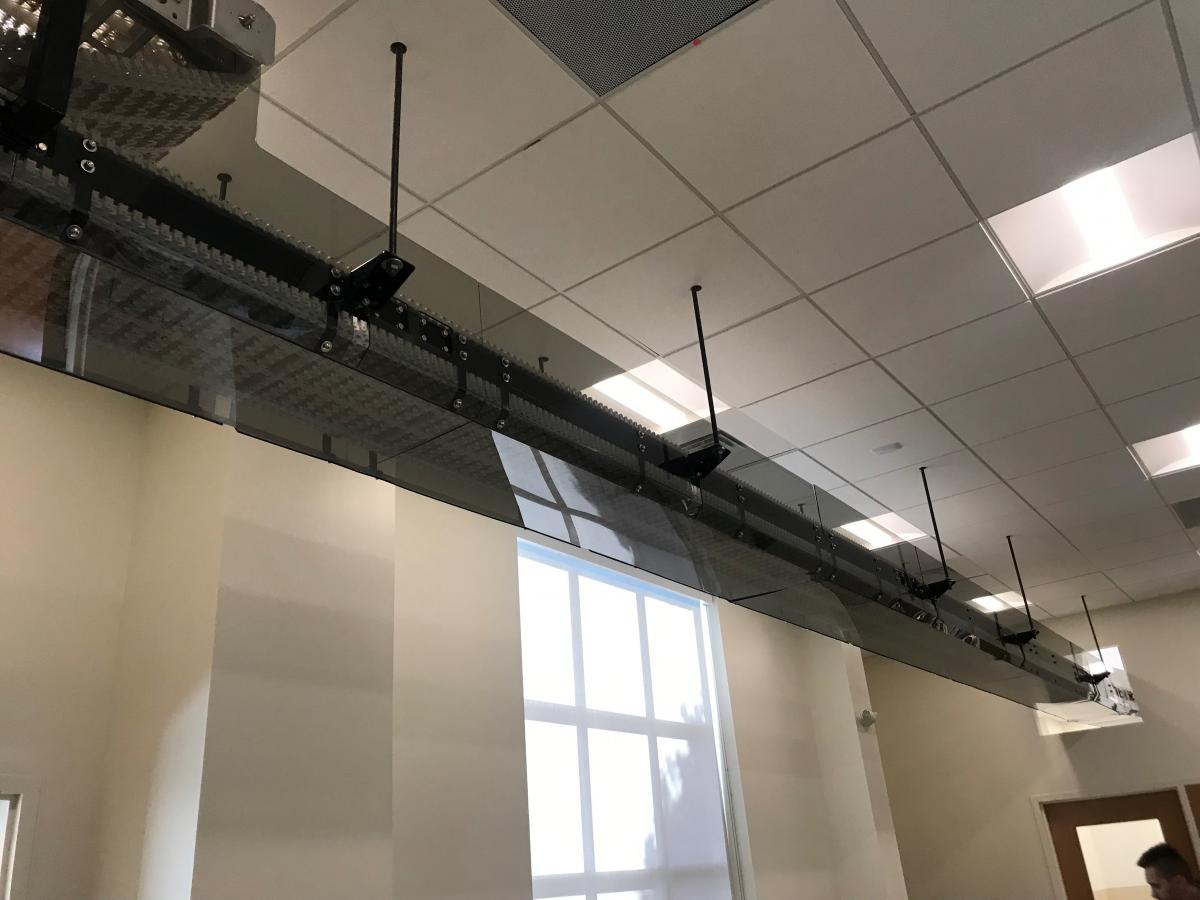 Each item is tagged with a Radio Frequency Identification (RFID) that allows the automated system to check in, check out and securely track library materials. Because it’s based on radiowave technology, it doesn’t require line-of-sight. Unlike barcodes, which must be scanned one a time, multiple RFID-tagged items can be set on an RFID pad and checked in or checked out. Customers at Morrison can experience this during the self check-out process. It’s not usual to see children or adults placing stacks of books on the RFID pad and immediately have their materials all checked out.
Each item is tagged with a Radio Frequency Identification (RFID) that allows the automated system to check in, check out and securely track library materials. Because it’s based on radiowave technology, it doesn’t require line-of-sight. Unlike barcodes, which must be scanned one a time, multiple RFID-tagged items can be set on an RFID pad and checked in or checked out. Customers at Morrison can experience this during the self check-out process. It’s not usual to see children or adults placing stacks of books on the RFID pad and immediately have their materials all checked out.
“I think it’s kind of hypnotic, watching it. It’s just so cool,” she said. “I love the robotic aspect of it.”
While Library staff still must physically put the materials on the shelf, the time it takes after items are sorted is significantly less. That frees up time for staff to create book displays, assist customers in person and plan programs to help make the Library experience even better.

The AMH and RFID technology is making the Library cooler on its own, Flanagan said. She gives tours of the conveyor belt to field trips and to the extra curious child who wants to see his or her book go on its journey back to the shelf.
Of course, it’s not just children who are interested in the machine.
“We let grown-ups look too,” Flanagan said.
Charlotte Mecklenburg Library is working to install AMH across all Library locations.

Local film school director partners with Library to create free 10-part film-making workshop
January 8, 2019
After using one of the private meeting rooms at Morrison Regional Library in early 2016 to make her first documentary, Julie McElmurry wondered what was next for her.
She already had two master’s degrees, so going back to school didn’t sound appealing. A seven-day film-making boot camp would cost her $2,000, and that sounded like a whole lot of money for just a week.
So, in May 2017, McElmurry and her husband sprawled a parade of Post-It notes, scribbled with ideas for the future, on a picnic table. It was there she figured out her next step.
“Instead of sending myself to film school for one week,” McElmurry said, “I decided to do this long-term project and find local people like me who want to learn and local filmmakers who want to teach.”
It was then McElmurry decided to put the $2,000 toward finding teachers, putting on events and basically starting a film school herself.
That was the birth of the Charlotte Unconventional Film School.
Of course, before she could host a class, she needed a place for people to go and a place for them to sit.
Propelled by a $7,000 grant from The Pilgrim Legacy Fund, McElmurry started scouting teachers and topics for Charlotte Unconventional Film School (CUFS). McElmurry rented space from Snap Photography and Business Services on Old Pineville Road in a strip mall next to a Venezuelan restaurant. She wrangled up a few plastic tables and chairs for a ragtag classroom set. Soon, she found herself sharing the joys of making movies with others.
“I want people to connect, learn and create a space where they can find each other and move on from there and have friendships,” McElmurry said. “That’s the most important thing for me -- that people connect.”
At the end of the day, she thought, isn’t that what cinema is all about?
And so it went for a year, McElmurry scheduling 12 classes during a five-month period.
Then, in the fall of 2018, McElmurry met a Charlotte Mecklenburg Library employee who loved the idea of creating a learning-based partnership for Library customers who could benefit from the already established film school. He also happened to be the person responsible for the new Innovation programs at the Library.
“What I loved so much about Julie's work and her organization was her belief that everyone has the ability to learn something new and create something original. The belief that anyone equipped with the right knowledge and tools is a very democratic take on human potential; it’s also a very Library-like mindset. Film just happens to be the medium.” said Seth Ervin, chief innovation officer at Charlotte Mecklenburg Library. “Julie also emphasized the importance of reaching diverse audiences and showcasing diverse talent, which is something that matters a great deal to the Library.”
For her first step in the project, McElmurry hosted an event, “Screenwriting for People Who Are Already Good Writers,” at a Library location to see if partnering with the Library would be a good fit.
Nearly two dozen people filled the room one day in October 2018, and the event was a smash success.
Because of that interest, McElmurry and the Library launched the 10-part Make a Movie workshop with classes running from January 2019 through May 2019. The workshop offers teachers as well-regarded as Mike Collins, host of Charlotte Talks on WFAE; author Tommy Tomlinson; and a crewmember from the Academy Award-winning movie Dances With Wolves.
“Ultimately, I want to equip everyone in Charlotte who wants to make movies or to tell stories that haven’t been told yet,” McElmurry said. “It dawned on me the way to do that is to find partnerships with organizations like the Library that can open this up to people so money isn’t a hindrance.”
What should people expect from these workshops?
While each of the 10 workshops stand independently from one another, McElmurry noted it does help if you can go to all of them as in totality it gives a complete overview of filmmaking. The workshop topics range from audio production to how to interview subjects to cinematography basics.
McElmurry stressed, though, these workshops aren’t the end goal for any budding filmmaker; they’re the beginning.
“You can’t expect to attend these workshops and know this stuff. It’s an intense three hours to learn. It’s ideal for people who are curious and who have always wanted to study this stuff. It’s a starting point for people who are self-taught,” she said. “This is their first chance to sit in front of an actual professional teacher and learn from them. As we teach ourselves, we learn, but there are a lot of gaps. To sit there with a professional, take notes and ask questions, there’s nothing else like that.”
The best part about the workshops? Like every Library program, they’re free.
Still, as a new filmmaker herself, McElmurry might just be as excited as anyone for the classes.
“I’ll be sitting there in the room like everyone else, taking notes. I’m the director,” she said, “but I’m also a student at my own film school.”
To register for any of the upcoming 10 workshops in the Make a Movie series, go here. Please note, due to high interest, some workshops may be full or wait-listed.

These books have resolutions. Do you?
January 10, 2019
Vern McLellan wrote, “What the new year brings to you will depend a great deal on what you bring to the new year.” Maybe you’re considering new year’s resolutions, and maybe you aren’t, but what does it mean to create a ‘new you’ and, more importantly, do you need to reinvent yourself? We’ve gathered a list of excellent books and inspirational ideas that explore the themes of starting fresh, improving your life and staying true to yourself.
Openly Straight by Bill Konigsberg
Rafe is tired of everyone focusing on his sexuality. His parents have supported him after he came out in eighth grade, but he wants people to see him for who he is beyond “that gay guy.” When he starts at a new all-boys school on the other side of the country, Rafe decides it’s his chance to start over and learn who he is without the label. Yet the longer he takes to tell the whole truth, the more complicated things get. Soon Rafe will have to figure out what’s most important to him—a blank slate or being true to himself.
Darius The Great Is Not Okay by Adib Khorram
Darius Kellner has never felt connected to his Iranian family or his Persian roots, but he’s about to spend a summer in Iran. He doubts he’s going to enjoy the summer considering he’s already dealing with his disapproving father and clinical depression, he can speak more Klingon than Farsi and he hasn’t had luck making friends with people who don’t speak the same language. Then he meets Sohrab, the son of his grandparents’ neighbors, and their friendship helps Darius find himself. He’ll have to find a way to bring his new-found sense of self home with him at the end of the summer.
The Resolutions by Mia García
For four friends – Nora Nora, Lee, Jess and Ryan – their their senior year has made it harder to stay close. However, Jess has a plan to help them reunite. She decides they’ll reinstate their tradition of making resolutions but, instead of each of them picking their own resolutions, they’re going to pick resolutions for each other. What starts as a way to bring the friends closer together will end up testing their bonds as well as themselves.
What Do You Really Want? By Beverly K. Bachel
It’s easy to pick a resolution that sounds good, but if someone wants to make a change or reach a goal, it’s important to pick something that’s important and personal. What Do You Really Want can help you better, organize your thoughts, understand what your interests are and map out ways to get the things you desire most.
Get started
Regardless of your opinion on new year’s resolutions, Charlotte Mecklenburg Library is here to help and inspire you, and we’ve got the events to prove it!
Have you ever thought about starting a bullet journal? Register for a workshop on getting started with your own Bullet Journaling at Davidson on Jan. 7!
Want to give back to your community or need community service hours? Check out Library community service projects! You can find a list of upcoming events here.
Looking for a little guidance on your future? Try out some of our College & Connection Programs such as the Drop In at Beatties Ford Road Regional Library or the My Next Step event at South County Regional Library.
From all of us to you, we wish you a happy, healthy and wonderful new year.
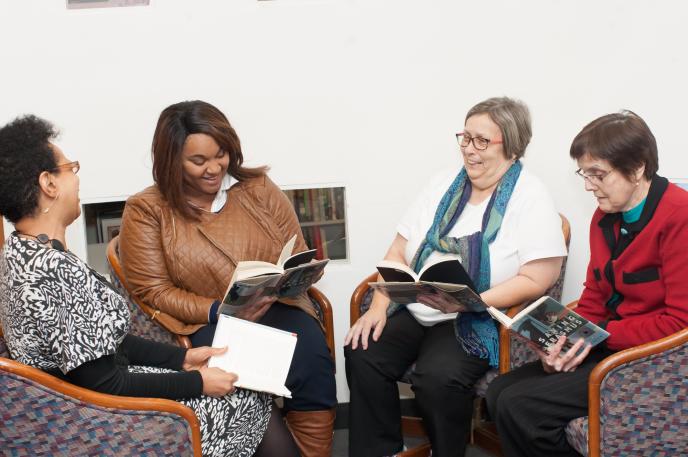
Start your year with a reading challenge
January 10, 2019
It’s that time again: the new year. That means new goals, new resolutions, a new you. As you dust off those sneakers and that yoga mat, envisioning this new healthier, fitter, more powerful (insert your own adjective) version of you, don’t forget to revamp your reading goals, too.
Each new year Goodreads asks members to pledge their annual Reading Challenge, the number of books they intend to read in the upcoming year. Whether you’re a Goodreads member or not, what are your reading goals for this year? Will you strive for a reasonable 12, just one book a month? Or will you take on a larger challenge and go for one a week, 52 book in a year?
To help get you started, here are some unique challenges designed to guide you through your 2019 reading journey:
- Keep it simple with an A-to-Z Challenge: Read a book whose title or author starts with every letter of the alphabet. For example: A – The Alchemist by Paolo Coelho or The Hate U Give by Angie Thomas. With 26 letters, this challenge will give you two weeks per book.
- Regularly read mysteries? Think outside of your go-to genre by reading An Assortment of Genres this year.
- Don’t care to branch out? Then try setting a number and reading new books within your favorite genre or your favorite topic. Start with these lists of Mysteries/True Crime titles, of books about Global Issues, of Non-Fiction titles, or Banned Books and add in your own.
- Pack your suitcase and read a book from every country around the world. Or, try reading a book from each state in the U.S.!
- Lastly, for those serious readers, try a list designed to make you hunt for a variety of books, including some very specific qualifiers, like you’ll find in the 52 Books in 52 Weeks challenge or the 2019 POPSUGAR Reading Challenge.
No matter what kind of reading challenge you set for yourself this year, Charlotte Mecklenburg Library is here to support you. If or when all those other resolutions fall away, we’ll be here to settle you in on the couch with a good book. Happy new year!
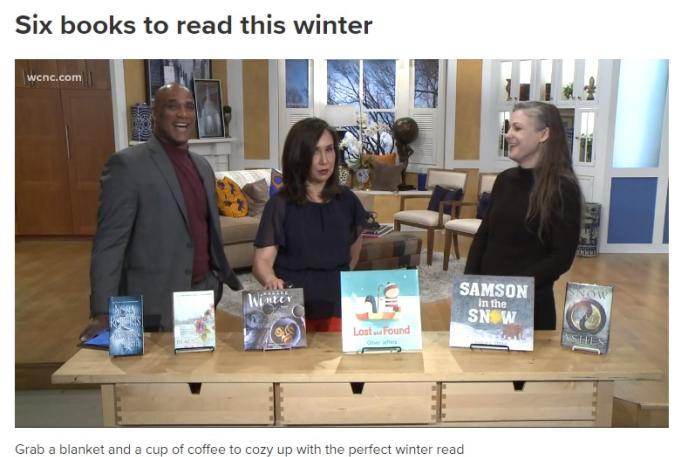
Stay cozy with these wintry reads
January 11, 2019
Dana Eure, the Charlotte Mecklenburg Library's acting library director, made a guest appearance on WCNC's "Charlotte Today" on Jan. 10, 2019, and shared six cozy books to read this wintry season.
Adult fiction
Lunacy is Nate Burke's last chance. As a Baltimore cop, he watched his partner die -- and the guilt still haunts him. Maybe serving as chief of police in this tiny, remote town, where darkness falls by midafternoon and temperatures plunge to zero and below, will bring some kind of solace. It isn't as if he had anywhere else to go.
From the New York Times bestselling author of Always and The Violets of March comes an emotional story of a dreadful storm, a missing child cold case, and a determined reporter who just may have a stronger connection with the past than she realizes.
Seattle, 1933. Single mother Vera Ray kisses her three-year-old son goodnight and departs to work the night shift at a local hotel. She emerges to discover that a May Day snow has blanketed the city, and that her son has vanished. Outside, she finds his beloved teddy bear lying facedown on an icy street, the snow covering up any trace of his tracks--or the perpetrator's.
Seattle, 2010. Seattle Herald reporter Claire Aldridge, assigned to cover the May 1 "blackberry winter" storm and its twin, learns of the unsolved abduction and vows to unearth the truth. In the process, she finds that she and Vera may be linked in unexpected ways.
Sarah Jio burst onto the fiction scene with two sensational novels-- The Violets of March and The Bungalow . With Blackberry Winter-- taking its title from a late-season, cold-weather phenomenon--Jio continues her rich exploration of the ways personal connections can transcend the boundaries of time.
Adult nonfiction
Making Winter: A Hygge-inspired Guide For Surviving The Winter Months
Want to survive those dark and freezing winter months? The Danish do it with hygge--a concept that's all about coziness, simple pleasures, and the company of loved ones. Embrace this warmhearted philosophy with these 25 creative crafts and recipes, which range from gorgeous trinkets to snuggly woolens and tasty treats. You don't have to be an expert with a crochet hook or a whiz in the kitchen to complete the projects, which include easy-to-follow instructions and photographs. Make vintage ornaments, bake plum and orange blondies, crochet boot cuffs, and more--and you'll feel hygge warming you no matter how cold it is outside
Teen fiction
Orphaned Meira, a fierce chakram-wielding warrior from the Kingdom of Winter, must struggle to free her people from the tyranny of an opposing kingdom while also protecting her own destiny.
Picture book
While trying his best to help a penguin that has shown up at his door, a boy journeys all the way to the South Pole, only to realize that the penguin was never lost.
When friendly giant mammoth Samson falls asleep and wakes up in the middle of a blizzard, he finds and shelters a little red bird and a flower-loving mouse, beginning new friendships for all.
Stay warm and cozy this winter!

Books Hitting the Big Screen in 2019
January 14, 2019
They say never judge a book by its movie, and, of course, we never would, but it’s still fun to see our favorite stories and characters translated to the big screen. The new year will bring many movie adaptations of popular books to the screen.
Check out the originals from Charlotte Mecklenburg Library before you head to the theater!
Time to revisit the classics. The film version of Richard Wright’s Native Son hits the screen in January, while in December moviegoers can enjoy Louisa May Alcott’s Little Women and Jack London’s The Call of the Wild. Modern classics like Pet Sematary by Stephen King, Motherless Brooklyn by Jonathan Lethem and The Goldfinch by Donna Tartt will also shine on screen in 2019. A few classics are also finding their time to shine as TV series, including Catch-22 by Joseph Heller, Good Omens by Neil Gaiman and Terry Pratchett and The Watchmen by Alan Moore. We have the authors’ original tales available in all formats--traditional print, audio CD, e-book and digital audio.
Prefer some hair-raising suspense? This fall, Amy Adams stars in the movie based on A. J. Finn’s The Woman in the Window, while Helen Mirren will lead the cast of an adaptation of Nicholas Searle’s The Good Liar. Three Seconds by Anders Roslund and Borg Hellstrom is the basis of this spring’s thriller The Informer.
If you enjoy World War II historical fiction, this spring check out The Aftermath by Rhidian Brook before Keira Knightley stars in its big-screen adaptation or C. S. Forester’s The Good Shepherd, whose movie will feature actor/author Tom Hanks.
Dramedy more your type? Graeme Simsion’s The Rosie Project and Maria Semple’s Where’d You Go, Bernadette are also coming to theaters this spring.
Fans of young adult literature will surely spend plenty of time at the movies this spring with the release of film adaptations of Five Feet Apart by Rachael Lippincott, The Sun Is Also a Star by Nicola Yoon and All the Bright Places by Jennifer Niven. The movie Chaos Walking is based on Patrick Ness’ The Knife of Never Letting Go.
For younger readers, check out the story of The Sword in the Stone before the January release of The Kid Who Would Be King. In February, favorite children’s series How to Train Your Dragon will debut another title – The Hidden World. Fans of Artemis Fowl can catch up on the book series before the movie version hits theaters in summer 2019.
Just don’t be one of those people who says, “I saw the movie but didn’t read the book.”
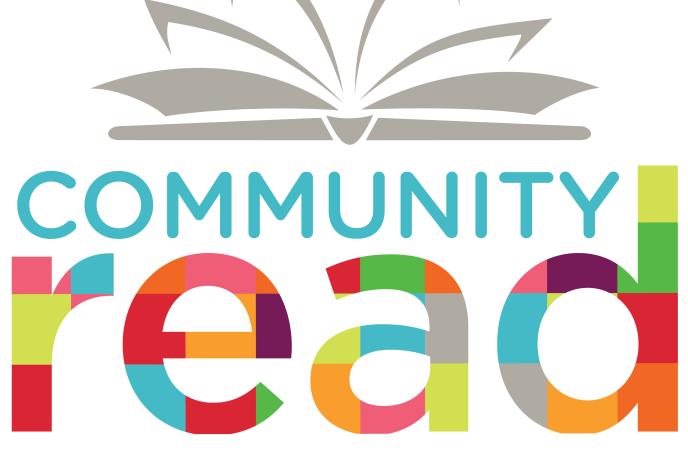
Five Ways to Enjoy Community Read in March
January 22, 2019
PRESENTED BY 
ADDITIONAL SUPPORT FROM 

Be part of a big, exciting, community-wide book club, Charlotte Mecklenburg Library’s annual Community Read. We’ve selected books for every age group, and there are plenty of ways to participate.
1. Join the biggest book club in town.
We’re more than a great community. We’re a book club. And with a book selection for every age group, everyone is invited to join in the fun. This year, the signature title for the program, which takes place in March 2019, is The Hate U Give by Angie Thomas. The companion titles for younger readers are Wishtree by Katherine Applegate and Love by Matt de la Peña. Join your library and your community! Take the pledge and start reading.
Adults and Teens: The Hate U Give by Angie Thomas
Preteens: Wishtree by Katherine Applegate
Children: Love by Matt de la Peña
2. Join a conversation or two.
There are also a lot of conversations taking place around The Hate U Give and its relevant themes. Join a conversation, use your voice and help change the narrative of our community.
3. Be a partner
Host your own Community Read program. Start a book club, family story time program, be a guest speaker or volunteer at your local school. More importantly, what type of impact can you make in our community? How can your voice be heard? Share your work by using our Community Read Partner Event form.
4. Read the books, then meet the authors!
Save the date for these two amazing author events happening during Community Read in March 2019. Angie Thomas, author of The Hate U Give, will appear in Charlotte on March 19. Matt de la Peña, author of Love, will visit ImaginOn on March 28. Tickets are free but limited. Stay tuned for more details and ticket information.
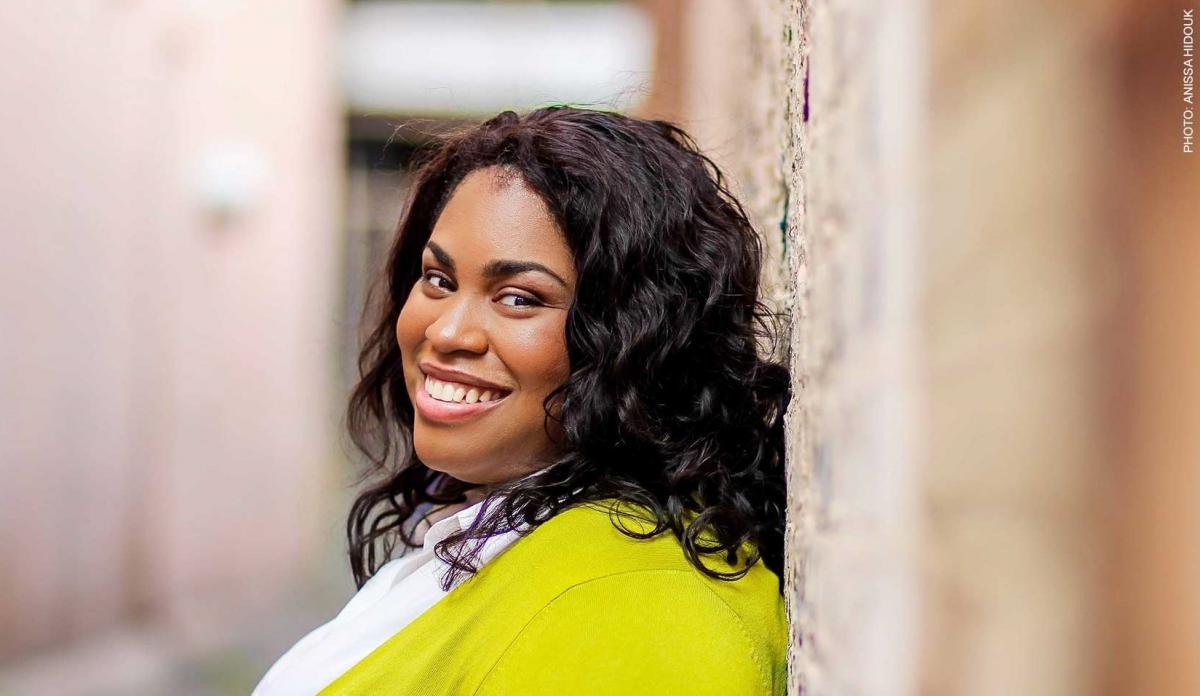

5. Spend time with your neighbors at a local program.
Community Read is so much more than reading the books – we hope you will visit your local branch to participate in a program too. With Community Read themed story times, book discussions and programs, there is sure to be something your whole family can experience! More so, the Library welcomes all of our community members to use the Community Read program as an opportunity to come together to discuss issues, seek understanding and create innovative solutions to community challenges beyond the program! Check out the calendar for all Community Read programs and events.
Read together. Share together. Be part of your community.
Invite your friends and family to participate. Make new friends. Join book club discussions hosted around our community. Visit cmlibrary.org to learn more.
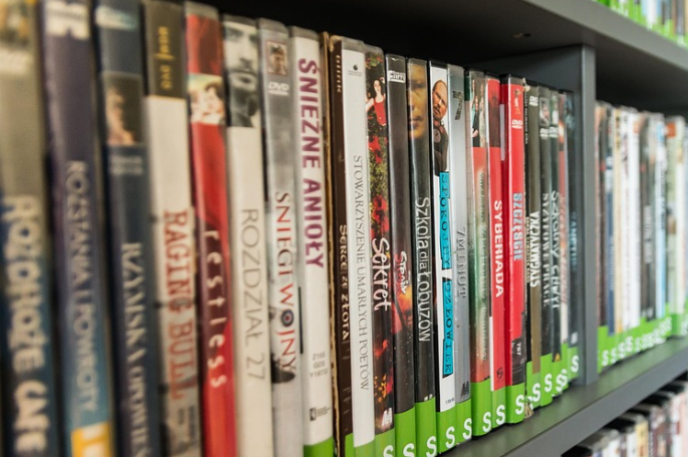
New DVD Policy Makes it Easier to Preview Newest Releases
January 23, 2019
To better serve its customers, Charlotte Mecklenburg Library introduced new changes to its DVD circulation policy. As of Jan. 14, 2019, the following changes have taken effect:
- Customers can borrow most items for three weeks
- Customers can borrow new release and fiction DVDs for seven days
- Customers can renew most items up to three times (instead of two)
Click here to search our extensive DVD collection.
There are three categories of DVDs:
1) Rentals - are new films containing the green labels and are available on the shelf at various locations.
- Can be borrowed for up to seven days
- $2 fee to check out
- Late fee assessed is 25 cents per day
- 10 DVDs maximum checkout allowed
2) Fiction - (Adult and Children’s items)
- Can be borrowed for up to seven days
- Late fee assessed is 25 cents per day
- 10 DVDs maximum check out allowed
- Can be renewed up to three times
3) Non Fiction DVDs
- Can be borrowed for three weeks (same as before)
- Late fee assessed will be 25 cents per day
- 10 DVDs maximum check out allowed
- Can be renewed up to three times
